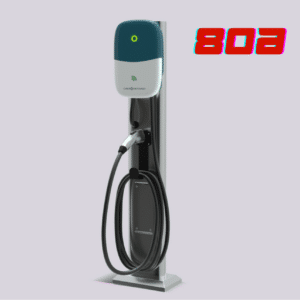- 1. Mastering the Basics of Charging
- 2. Driving Habits that Preserve Battery Life
- 3. Utilizing Regenerative Braking
- 4. Routine Maintenance and Inspections
- 5. Protecting Against Environmental Factors
- 6. Planning for Long-Term Battery Health
- Conclusion
Electric vehicles (EVs) are transforming the automotive industry with their cleaner and more sustainable technology. The battery is the most critical component of an EV, and proper care is essential to ensure its longevity and performance. Here’s a concise guide on how to take care of your EV’s battery:
The battery is the most expensive part of an EV. Proper care and maintenance extend its life, maintain efficiency, and reduce long-term costs. Neglecting battery care can lead to decreased range, increased charging times, and higher expenses.
1. Mastering the Basics of Charging
Understanding how to charge your EV efficiently can help you maximize its range and performance. Here are some key practices to ensure you’re charging your vehicle in the best possible way.
Optimal Charging Practices:
- Avoid Full Discharges. Keep your battery’s charge level between 20% and 80% for daily use to avoid deep discharges that can degrade the battery.
- Moderate Charging Levels. Avoid charging to 100% regularly; reserve full charges for long trips.
- Use Level 2 Chargers. Minimize the use of fast chargers to reduce battery stress; use Level 2 chargers for daily needs.
- Managing Charging Temperature:
- Avoid Extreme Temperatures. Charge your EV in a garage or shaded area during hot weather and precondition your car in cold weather.
- Monitor Charging Environment. Charge in environments with stable temperatures to reduce battery stress.
2. Driving Habits that Preserve Battery Life
How you drive your electric vehicle can greatly affect the health and longevity of its battery. Implementing specific driving techniques can help minimize battery degradation and maintain optimal performance
Smooth Acceleration and Braking:
- Gentle Acceleration. Avoid rapid acceleration to conserve energy and reduce battery wear.
- Gradual Braking. Use regenerative braking to recover energy and improve efficiency.
Maintain Moderate Speeds:
- Optimal Speed Range. Drive at moderate speeds to conserve battery life and extend range.
- Plan Efficient Routes. Avoid heavy traffic and reduce stop-and-go driving.
3. Utilizing Regenerative Braking
Regenerative braking is a key feature in electric vehicles that can help extend your battery’s range and lifespan
Benefits of Regenerative Braking:
- Energy Recovery. Regenerative braking converts kinetic energy into electrical energy, extending your EV’s range and reducing battery wear.
- Driving Techniques. Anticipate stops and decelerate gradually to maximize energy recovery.
4. Routine Maintenance and Inspections
Regular maintenance and inspections are essential for ensuring the longevity and performance of your electric vehicle’s battery. By staying proactive with maintenance tasks and staying up-to-date with software updates, you can keep your battery in optimal condition for years to come.
Regular Battery Health Checks:
- Diagnostic Tools. Use onboard tools or apps to monitor battery health and address issues promptly.
- Professional Inspections. Schedule periodic professional inspections to ensure the battery and charging system are functioning correctly.
Software Updates
- Manufacturer Updates. Keep your EV’s software up to date to benefit from improvements in battery management systems.
5. Protecting Against Environmental Factors
Environmental factors such as temperature extremes and storage conditions can significantly impact the health and performance of your electric vehicle’s battery. Implementing strategies to mitigate these factors is crucial for maximizing battery lifespan and efficiency
Temperature Management:
- Parking Practices. Park in a garage or shaded area in hot weather and precondition the cabin in cold weather.
- Thermal Management Systems. Use your vehicle’s thermal management system effectively to maintain optimal battery temperature.
Weatherproofing and Storage:
- Partial Charge. Store the battery at around 50% charge to prevent over-discharge or overcharge.
- Avoid Extreme Conditions. Store your EV in a location with stable, moderate temperatures.
6. Planning for Long-Term Battery Health
Ensuring the long-term health of your electric vehicle’s battery requires foresight and proactive measures. By understanding the factors that contribute to battery degradation and considering potential replacement scenarios, you can effectively manage your battery’s lifespan and performance.
Understanding Battery Degradation:
- Cycle Life. Manage charging habits and avoid unnecessary cycles to slow down battery degradation.
- Calendar Life. Proper storage and charging practices can help prolong calendar life.
Considering Battery Replacement:
- Replacement Indicators. Signs of needed replacement include reduced range and increased charging times. Consult a professional if you notice these symptoms.
- Recycling and Disposal. Ensure proper recycling or disposal of old batteries through manufacturer programs.
Conclusion
Proper care of your electric vehicle’s battery is essential for maximizing its lifespan and maintaining optimal performance. Following these tips ensures that your EV remains efficient, reliable, and eco-friendly, contributing to a cleaner, more sustainable future. Embrace the journey towards a brighter tomorrow with a well-maintained EV.
Featured Products
-
 Add To Cart Select options
Add To Cart Select options
Nick Zamanov is a head of sales and business development at Cyber Switching. He is an expert in EV infrastructure space and he is an EV enthusiast since 2012, Since then Nick strongly believed that electric vehicles would eventually replace Internal Combustion Engine (ICE) cars.



